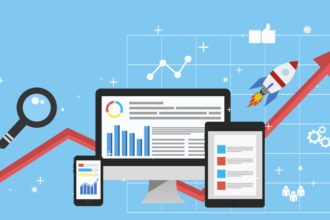 Today’s guest post comes from Zach Watson of TechnologyAdvice. Thanks Zach for contributing to to dataminingblog.com
Today’s guest post comes from Zach Watson of TechnologyAdvice. Thanks Zach for contributing to to dataminingblog.com
 Today’s guest post comes from Zach Watson of TechnologyAdvice. Thanks Zach for contributing to to dataminingblog.com
Today’s guest post comes from Zach Watson of TechnologyAdvice. Thanks Zach for contributing to to dataminingblog.com
As the amount of data available to organizations and marketing departments grows, visualizations of that data are growing more complex. That’s not to say that data visualizations are becoming unwieldy – quite the opposite. The increasing amount of information being displayed in visual form helps viewers understand the often convoluted relationships between ranges of data.
However, when presented with the choice to visually represent data relationships, it can be difficult to choose which model to apply. Different types of data work better with specific visualization models.
Let’s examine five of the most common data relationships that are being transformed into visualizations.
1. Geospatial
Information on maps used to be set in stone once the project was completed. With geospatial visualizations, sometimes referred to as geovisualizations, users can explore huge amounts of data sorted by geographic details. Interactive elements are common to this model of visualization, and provide insight for a range of uses cases, from political campaigns to large sales organizations.
Displaying data in this manner helps distinguish the regional impact of an organization’s efforts, or a certain local policy or law. This visualization model is used primarily by larger companies since it requires a large amount of data to create real value. Geospatial visualizations often focus on particular silos of information, like data from particular cities or regions of a country.
2. Temporal
Displaying data from a range of time is another common model for visualizing information. Like geospatial models, temporal visualizations include a wide array of applications and specific use cases. For example, steamgraphs highlight the ebb and flow of data around a central x axis.
Temporal visualizations allow viewers to zoom out from particular location, and focus on the increase in absolute activity as represented by the data. Temporal visualizations have been around for a while. Gantt charts are perhaps one of the first use cases in the business community.
3. Multidimensional
One of the most powerful capabilities of data visualization software, multidimensional models create representations of data clusters, which can be difficult to comprehend because of their abstract nature. These new visualizations often take the form of bubble charts, which represent data clusters in bubbles of varying size, as well as tree maps, which group data in categorical fashion.
Similar to many of these relationship models, multidimensional comparison has been around for some time as anyone who’s worked with pie charts can confirm. However, pie charts are very limited in their ability to show the relationships of a large number of categories because of their 2D structure. Newer multidimensional visualizations are much more adept at addressing large amounts of data covering a variety of categories.
4. Hierarchical
Hierarchical data visualizations display data as the name implies: through ascending or descending levels of importance, prevalence, or other metric. Common examples include dendrograms, and variations of tree diagrams, which are distinct from tree maps in that they display data in branches rather than in rectangular spaces.
Hierarchical visualizations excel at imposing rank on data sets, and also work well for displaying sub-categories of broader sets of data. Radial tree models and wedge stack graphs are some of the more visually impressive methods of displaying data in hierarchical fashion.
5. Network
Perhaps the most intuitive model for showcasing relationships between data, network visualizations focus on displaying connections between various data sets. Common models are dependency graphs and node-link diagrams.
As the amount of data available to organizations of all types increases, network visualizations will only become more important. The utility of network visualizations comes from their ability to easily connect disparate types of data. Such connections provide a simple method for exploring a number of data sources.
Connecting different data sets has become a science over the past several years, and visualizations represent the result of long hours of labor. Data isn’t simply for the analytics experts anymore; it needs to be seen and understood by a number of users so they can leverage it for insight. Visualizations are quickly becoming the common ground between data experts and laypeople.
Author Bio
Zach Watson is the content manager at TechnologyAdvice. He covers gamification, healthcare IT, business intelligence, and other emerging technology. Connect with him onLinkedIn.








